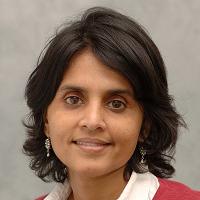Be the change you want to see: Leadership training and women's political participation
Can a leadership and empowerment training programme increase women's political participation? This research question is motivated by two observations:
- Women's political participation is very low in most countries, especially in elected office. On average, they constitute only 21% of national parliaments (11% in India). Over the three decades 1980-2010, women comprised less than 6% of state legislators in India.
- This is a matter of societal concern, since several previous studies have shown that women's representation in elected office has a positive effect on many human development outcomes such as infant mortality, education and access to justice. This project will focus on mitigating “supply” side barriers to women’s participation, stemming from women's lower political knowledge, connections and experience, or poorer self-perceptions of their likely success as political candidates. While other studies have documented gender gaps in self-perceptions as candidates (Lawless and Fox, 2010), no study has examined the impact of a purposive intervention to improve women's self-perceptions and/or provide direct encouragement and support for their entry into politics.
We will study an intervention that seeks to increase women's participation in the political process--both in terms of numbers and in terms of effectiveness - by means of an empowerment and leadership training programme delivered by a non-profit organisation in Uttar Pradesh. The leadership and empowerment training programme will be delivered through a network of existing women’s self-help groups (SHGs), and one proximate goal is to increase women's participation in the September 2015 village council elections.
In order to rigorously evaluate the effectiveness of this programme, it is being offered in a randomised manner across village councils (or “Gram Panchayats”, henceforth GPs). The programme will train nearly 8000 women across 40 districts of U.P., with more than 1700 “treatment group” GPs and more than 1200 “control group” GPs – making it probably the largest such training programme implemented anywhere. The randomisation process is now complete and we have verified that the two groups are identical on a comprehensive set of demographic characteristics.
The project will enable us to answer the following specific questions:
Can training programmes that target women’s self-perception and leadership skills increase women’s involvement in the political process?
Several recent papers by economists have documented the impact of empowerment training geared to the goal of improving women's private welfare outcomes such as health and education (Ashraf, Low and McGinn, in progress), labour force participation (Bandiera et al, 2014), business success (Field et al, 2010) or self-reported measures of happiness and self-esteem (Mani et al, 2013). To our knowledge, there are no studies evaluating the effects of empowerment training on women's involvement in public life, including political activity.
Another advance in our study is that, in addition to activities like turning out to vote or becoming a candidate, we will track other measures of political engagement for which there is almost no data in the Indian context. This includes attending village meetings or election rallies, campaigning for specific candidates, discussing village problems and election-related issues, taking initiative to obtain or disseminate information about the political process.
Along what dimensions are women empowered in the political sphere by means of this training programme? Does community mobilisation encourage political participation even in the absence of individual training?
The training programme includes the following component: a large group meeting to identify and discuss village level problems, providing information about the political process, encouraging women to view themselves as potential agents of change, develop and practice skills in negotiation and building community activism. We aim to separately identify the effects of some of these components. The effects of community mobilisation will be identified by examining outcomes in a randomly chosen segment of the control group that had only the large group meetings without the leadership training component. We will assess the role of information by asking questions about the political process and women’s political rights in our surveys, and comparing the extent of knowledge across treatment and control villages. We will also ask questions about women’s roles in public life to examine whether the training programme was effective in changing self-perceptions. The role of better negotiation skills and trust building will be reflected by participation in collective action initiatives to access rights and entitlements, bring village problems to the notice of local officials or takes steps to address local problems.
Does the pre-existing level of empowerment and organisation of women in a village matter for the effectiveness of such training programmes?
We will use data on the membership and functioning of the women’s self-help groups in all the GPs (treatment and comparison), which will enable us to see whether prior organizational innovations are effective in amplifying the impact of the leadership training programme. This will enable us to examine whether existing levels of empowerment is a substitute or a complement for a targeted leadership and empowerment training programme.



